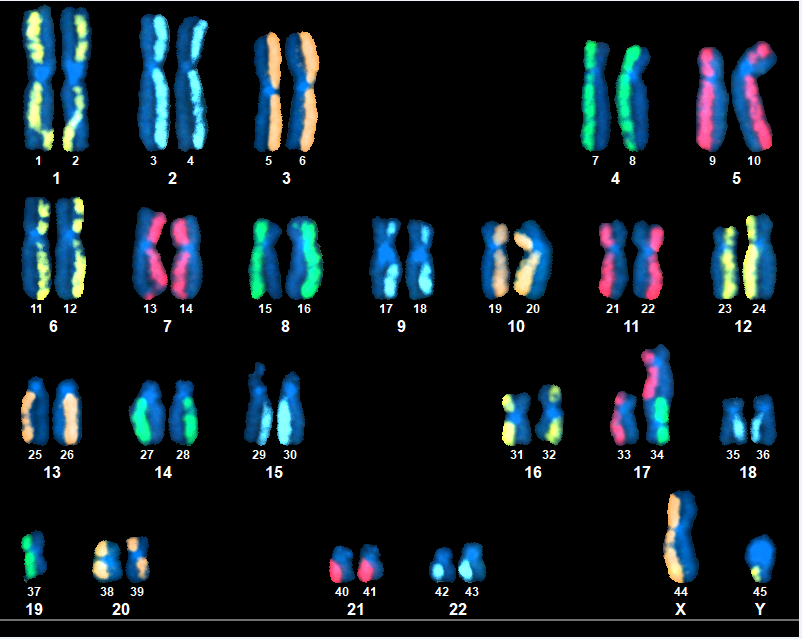
With the increasing use of DNA editing tools, detecting defects in the genomic now plays a central role in understanding biology, enhancing our understanding of disease, and developing personalized medicines. Sequencing individual genes is one way to determine if changes in the code have occurred, but what about when whole genes are flipped or transferred to a new location on a chromosome while the original code remains intact?
“The measurements we're making are just simply impossible to make with sequencing,” says Christopher Tompkins, Chief Technology Officer at KromaTiD. “Sequencing can find a snip or a frameshift, but if an entire chunk of DNA is now on the wrong chromosome, that's devilishly difficult to detect from sequencing.”
The Colorado-based genomics company was founded in 2015 by a group of radiation biologists who wanted to measure structural damage to genomes with paramount sensitivity. Their technique creates a visual map of the structure of chromosomes using synthetic DNA probes labeled with fluorescent tags. “We put hundreds to thousands to millions of those probes across a genome. By looking at color patterns, we can map out the relationship of different segments of the genome,” says Tompkins. If a structural change occurs, the probe pattern will ‘paint’ a different color pattern, allowing scientists to track the location of a genomic segment.
We put hundreds to thousands to millions of those probes across a genome. By looking at color patterns, we can map out the relationship of different segments of the genome
After the team performed a pivotal experiment for NASA to demonstrate the technique, they began exploring medical applications for the technology. A Fast Track Small Business Innovative Research (SBIR) grant from the National Human Genome Research Institute (NHGRI) funded the development of a genomic screening method as both a product and a service the company now offers. An additional Direct to Phase II SBIR grant allowed KromaTiD to develop AI software to analyze structural patterns, and a recently awarded SBIR grant from the National Center for Advancing Translational Sciences helped the company design a complete genetic analysis package by combining their technique with sequencing methods.
Tompkins says SBIR funding permitted KromaTiD to include their customers in the technology development. “That's now leading to some very standard products that will meet the needs of the wider genomics market.” The company works with NASA to model radiation risks for astronauts, leading CRISPR companies to safeguard gene editing, as well as companies focused on oncology and rare and undiagnosed diseases to detect structural genetic abnormalities.
KromaTiD serves more than 50 customers, has enabled the publication of at least 25 peer-reviewed articles, and has grown 100% in the past year. “We're going through a large commercial push and we're forecasted to grow three to four times next year. All of this growth is being driven by the products that we developed with NIH SBIR grants,” says Tompkins.
“[Gene editing] companies are really transforming how we can deal with some of the most difficult and most tragic kinds of human diseases right now. In doing so, however, we want to make sure that they do not edit into their genome other risks. That's where we come in,” says Tompkins. “By measuring structural genomic variation we can help the companies that are transforming human healthcare reduce the risk to the patient.”







